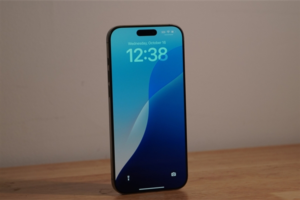Apple iPhone SE 4 configuration summary

On September 10 this year, Apple released the latest iPhone 16 series, bringing iPhone 16, iPhone 16 Plus, iPhone 16 Pro and iPhone 16 Pro Max.
Although many people have high hopes for this generation of iPhone 16, judging from market feedback, the performance of this phone does not seem to be ideal. The 60Hz screen and the delayed Apple Intelligence have caused a lot of complaints.
The iPhone is generally updated once a year, but there are exceptions. It is expected that in the first quarter of 2025, Apple will update the iPhone SE again and bring the fourth generation model. Judging from the information currently leaked, the iPhone SE 4 may be a very cost-effective Apple phone!
chip
Chip has always been a major selling point of Apple’s iPhone SE. Although its price is much lower than that of the original iPhone, the iPhone SE often has the latest A-series bionic chip of the year, and the same is true for the iPhone SE 4.

It is expected that the iPhone SE 4 will be equipped with the same A18 chip as the iPhone 16. The A18 chip of the iPhone 16 is built using TSMC’s N3E process. The CPU has a six-core design, including 2 4.05GHz P cores and 4 2.42GHz E cores. The GPU has a 5-core design and is equipped with a hardware ray tracing unit. In terms of AI, it is equipped with a 16-core neural engine.
Of course, considering that the body design of the iPhone SE 4 may not be as good as that of the iPhone 16, this chip may not be able to achieve performance that is completely equivalent to that of the iPhone 16, but with iOS, there is no need to worry about the smoothness of daily use.
Screen
Those netizens who angrily criticized the iPhone 16 60Hz screen, you don’t need to waste too much saliva on this model, because you still have to save some for the iPhone SE 4.

That’s right, the iPhone 16, which starts at 5,999 yuan, only has a 60Hz screen. There is no reason why the iPhone SE 4, which is priced much lower than it, would have the opportunity to use a high-refresh screen.
Due to the further reduction in price, the iPhone SE 4 also adopts the notch screen design of the “ancient” period, rather than the smart island that has become standard in the iPhone 15 series. The only good news is that the screen suppliers of the iPhone SE 4 seem to include two major domestic manufacturers, BOE and Tianma.
Although it is a bit abstract to launch a mobile phone with a large notch screen in 2025, considering that this is Apple, I believe that Apple fans will still accept it.
size
According to CNMO, the dimensions of iPhone SE 4 are exactly the same as those of iPhone 16. According to the official website, the specific dimensions of iPhone 16 are 147.63 mm in height, 71.62 mm in width, and 7.8 mm in thickness. However, despite the same dimensions, the weight of iPhone SE 4 may be lighter than that of iPhone 16, which is about 170 grams.

In terms of screen, iPhone SE 4 also uses a 6.1-inch screen. In contrast, some Android phone manufacturers advertise 6.3-inch or 6.4-inch devices as small-screen flagships, which shows how friendly Apple is to small-screen enthusiasts. This size also makes iPhone SE 4 a suitable choice as a backup phone, of course, it depends on whether you are willing to invest in it.
Baseband
Apple’s baseband journey has been full of twists and turns. In the early days, the iPhone relied on Intel’s baseband technology, but now it mainly integrates Qualcomm’s X-series baseband. However, no matter which supplier it changes to, Apple’s mobile phone signal problems have always been criticized by users. In response to this situation, the iPhone SE 4 will bring a new solution.

That’s right, iPhone SE 4 will be equipped with Apple’s self-developed 5G baseband for the first time. As early as 2019, Apple spent $1 billion to acquire Intel’s 5G baseband business. It is revealed that the research and development code of this self-developed 5G baseband is Ibiza, and it is planned to adopt the advanced 3nm process technology, while its supporting RF IC will adopt TSMC’s 7nm process.
But it is worth noting that Qualcomm has previously announced that it has reached an agreement with Apple to continue to provide Snapdragon 5G baseband and RF systems for iPhone phones released from 2024 to 2026. This means that Apple will continue to use Qualcomm’s baseband technology until the iPhone 18 series is released. This may imply that Apple’s ability to develop its own baseband has not yet reached the top level, so it chooses to try it on the iPhone SE first, rather than directly applying it on the iPhone 16 or iPhone 17 on a large scale.
camera
In recent years, Android phone manufacturers have continued to focus on imaging, which has been denounced by some netizens as “obsessed” and “evil ways”. But now, the most “orthodox” phone is coming. While the camera modules of Android flagship phones are heading straight for “nine-tube”, Apple’s iPhone SE 4 chooses to be equipped with a single camera.

The iPhone SE 4 has only one rear camera, which supports taking 48-megapixel photos and videos, and the front camera is likely to be 12 megapixels. Although this configuration is not as complex as the multi-camera system of some high-end Android flagships, it is sufficient for daily photography and video recording. For those who only need basic photography functions, the iPhone SE 4 is simply an ideal choice for “code scanning party”.
Battery life
The battery life of iPhone SE has never been its strong point, and this generation of Apple iPhone SE 4 is equipped with a USB-C interface and a built-in 3279mAh battery. Although there are iOS optimizations, it is still necessary to charge it every day. Therefore, the best use of iPhone SE 4 seems to be a backup phone.
price
Although there is still a gap compared to the iPhone 16, the improvement of the iPhone SE 4 compared to the iPhone SE 3 can be said to be huge. Apple’s consistent strategy is that significant performance improvements are usually accompanied by price increases. According to reports, the starting price of the iPhone SE 4 will increase by about 10% to US$499, or about RMB 3,500. However, considering that Apple phones are usually sold at a lower price in the Chinese market, the actual starting price may be just over RMB 3,000, which is only about half of the iPhone 16.
Summarize
Apple iPhone SE 4, with its simple imaging system and reasonable battery life, meets the needs of users who do not need a high-end multi-camera system. Although the battery life is average, as a backup or lightly used main machine, iPhone SE 4 still has a high cost performance. In terms of price, although it has increased, it still remains at a relatively affordable level, providing users with more choices. For users with a limited budget but want to experience the Apple ecosystem, iPhone SE 4 is undoubtedly a good choice.

Kazam is Focused on creating and reporting timely content in technology with a special focus on mobile phone technology. Kazam reports, analyzes, and reviews recent trends, news and rumors in mobile phone technology and provides the best possible insights to enhance your experience and knowledge.







